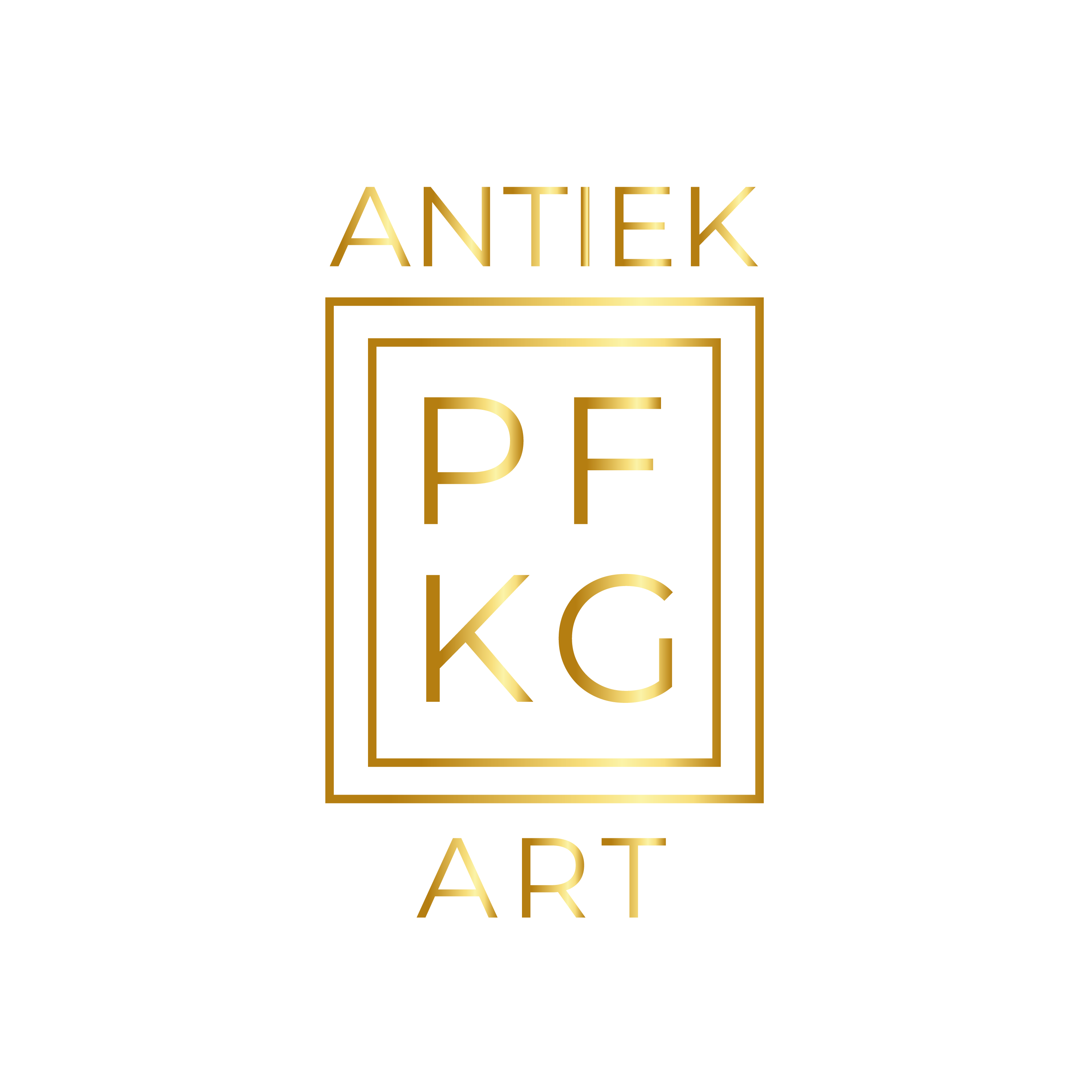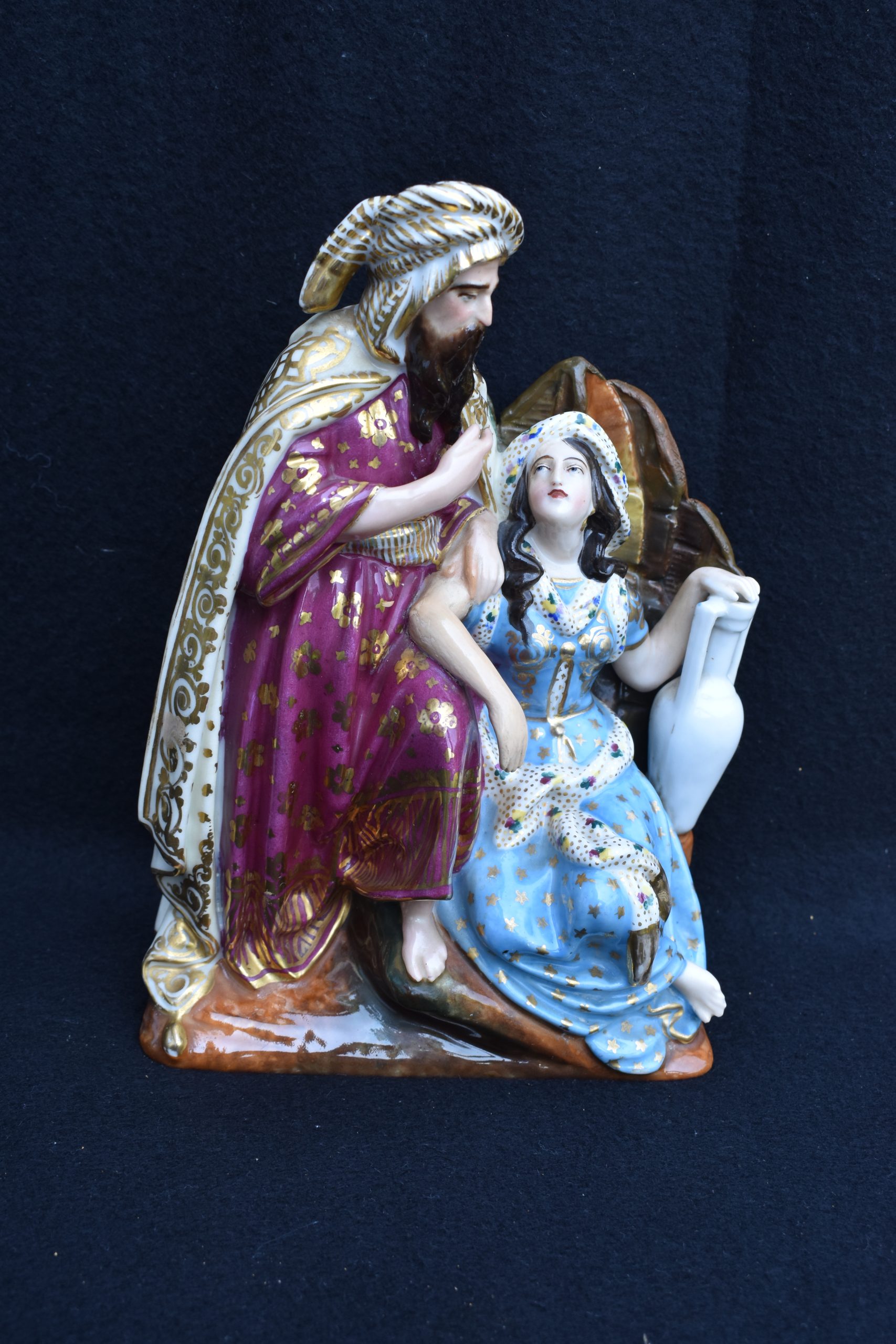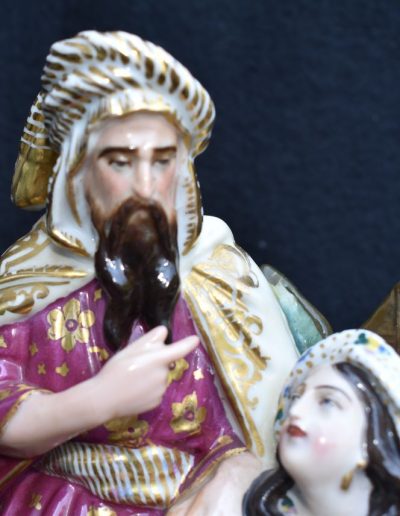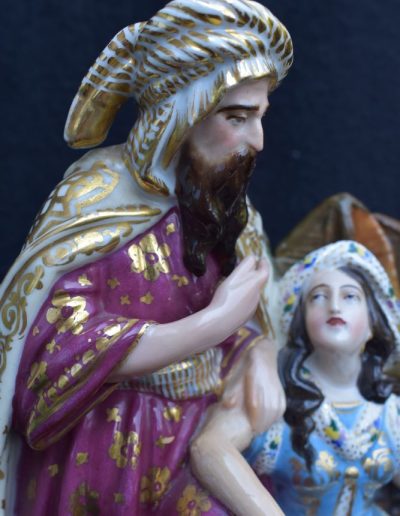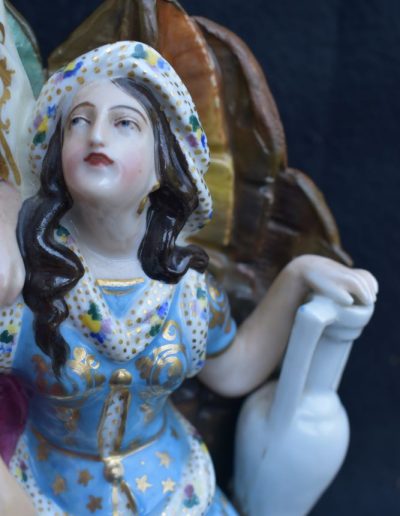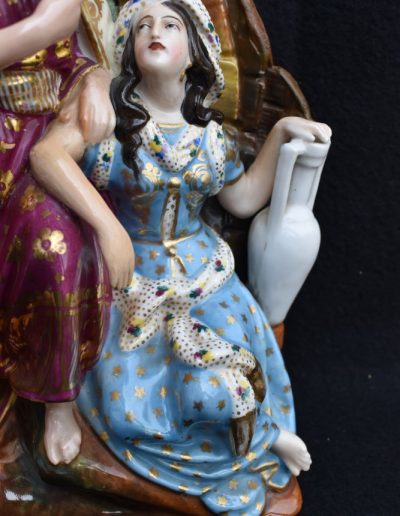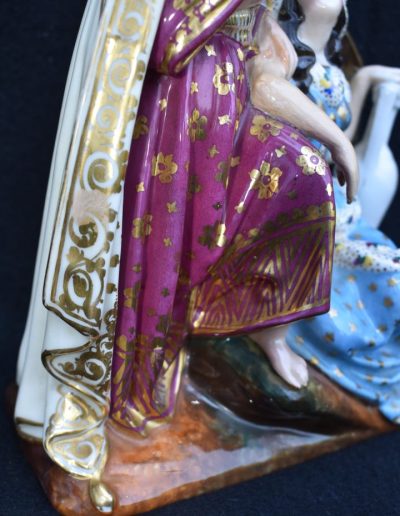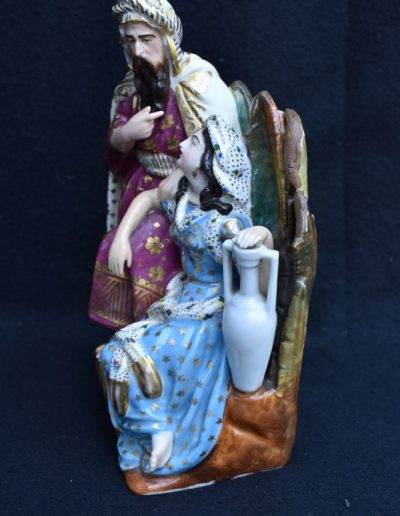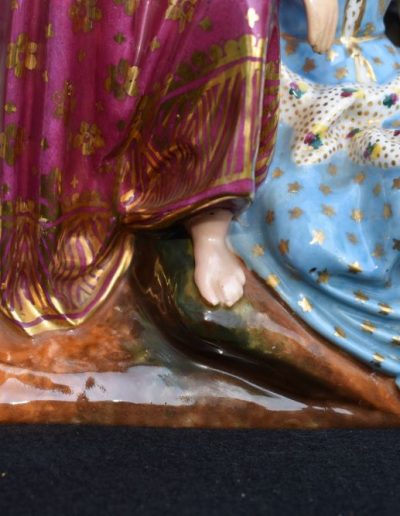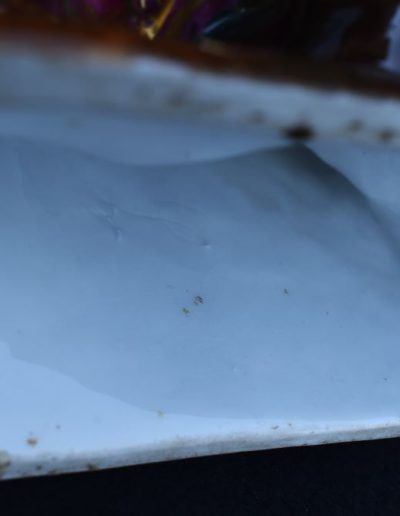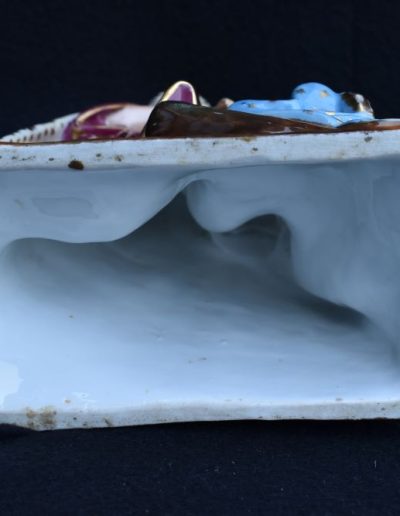Porcelain figure group, porcelaine de Paris, Jacob Petit (1796-1868) style and possibly attributed, rococo revival, Arabian sultan with turban and female beauty, polychrome and gilt handpainted, marked , ca. 1860.
Porcelaine de Paris, Jacob Petit, porcelain group of figures, polychrome handpainted, ca. 1860.
H 22cm W 15.5cm
€ 250,00
Prijs incl. 6% BTW & Verzendingskosten
Meer informatie
Jacob Petit (1796-1868) was one of the more innovative and controversial figures in the history of French porcelain. Born Jacob Mardochee in Paris in 1796, he took his wife’s name when he married Anne Adelaide Petit. Jacob Petit (1796-1868) owned one of the most important and best-known porcelain factories in France and became one of the leading producers of Rococo jewelery in the 1830s. At the 1834 Paris Exhibition, Petit’s work showed his genius for inventing countless and varied new shapes, which revolutionized the porcelain industry. Imitated throughout Europe, his name was given to a Rococo Revival style that reflected the many different influences on Petit’s designs. We present a beautiful porcelain group of figures depicting a couple of an Arab sultan and a beautiful woman (fortune teller?). This sculpture is executed in the Jacob Petit style and can probably be attributed to him. The standing man wears a long purple and gilded robe surmounted by a long white and gilded mantle. He has a black beard and wears a turban on his head. His left arm rests on the shoulder of a beautiful woman. She sits on a rock, wears a long blue gilded robe with a loincloth, has long black hair and wears a headscarf. Her right arm rests on the man’s left knee. In her left hand she holds a large amphora vase. As the basis of the image we see a brown earthy background with rocks, brown enamelled with greenish moss. A whole of high pointed foliage is used as a background. The bottom is hollow and fully glazed with the exception of the base ring. The statue was thus made for the most part with the use of a moulle. One has to look very closely to see the engraved mark in the glaze. It apparently consists of a large letter “P” with possibly the letter “v or j” attached to it. I am not aware of this mark, but this could possibly stand for Jacob Petit, but perhaps porcelaine de Paris? We date this statue around 1860.
Condition: very limited enamel loss at the back, otherwise perfect.
